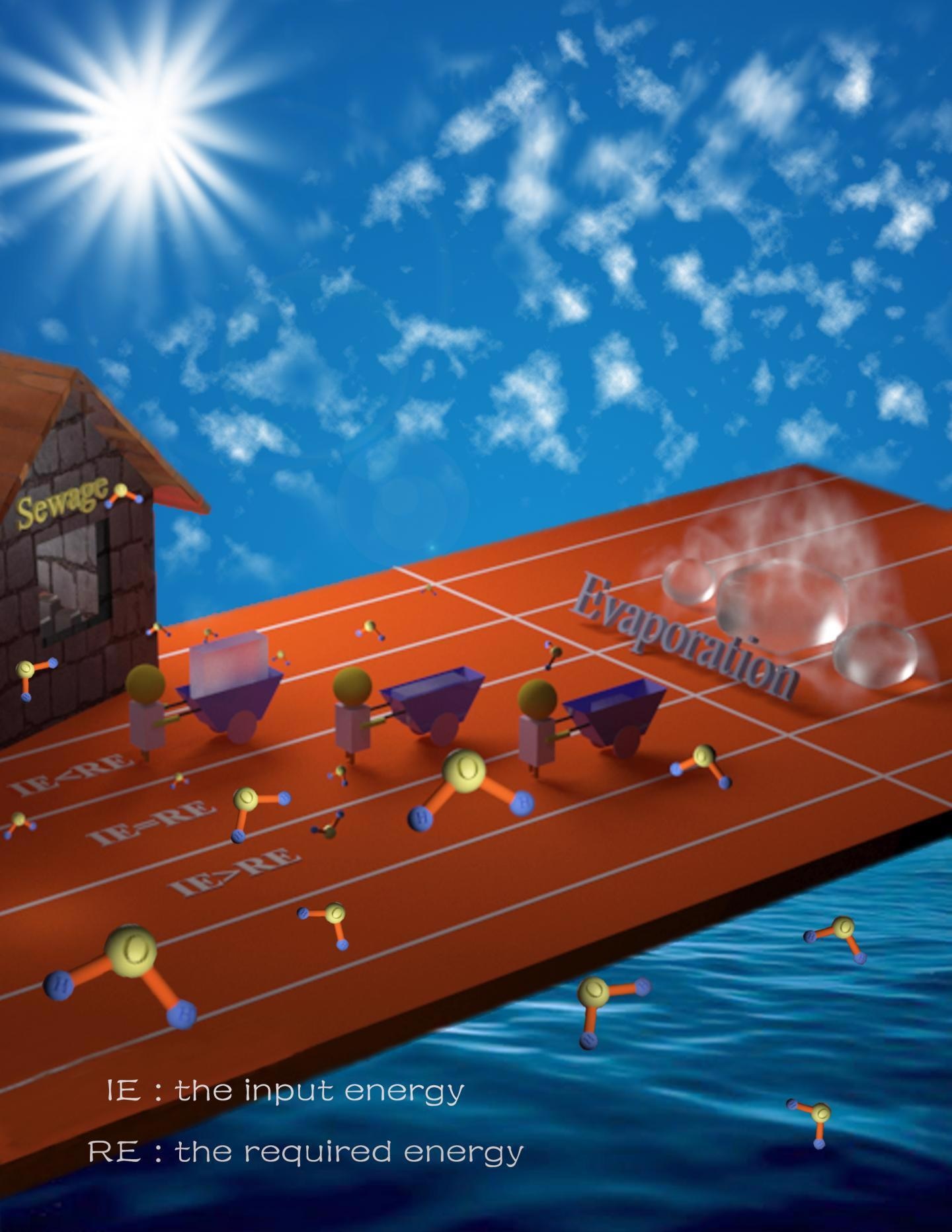Dec 10 2020
Across the world, a huge number of people are currently affected due to the lack of fresh drinking water, particularly in remote rural regions, leading to considerable risk to human life and society.
 Scientists have now come up with a strategy to increase the evaporation rate of water by matching the energy required for vaporization with the input energy, paving the way for improved efficiency of direct solar steam generation. Image Credit: Lei Miao from SIT.
Scientists have now come up with a strategy to increase the evaporation rate of water by matching the energy required for vaporization with the input energy, paving the way for improved efficiency of direct solar steam generation. Image Credit: Lei Miao from SIT.
Although methods like membrane distillation and reverse osmosis have been employed to treat saline water and mitigate the situation, they are hampered by drawbacks like high cost, low productivity and high energy consumption.
In the past few years, 'direct solar steam generation' (DSSG) has turned out to be a feasible method for water purification, which involves using 'photothermal' materials with the ability to absorb high amounts of solar energy.
Then, these materials are made to float in water, which helps regulate localized heating and produce water vapor that is later condensed to produce clean water.
Existing DSSG techniques have attained the limits of solar thermal efficiency and evaporation rate, but given the demand for high-flux clean water in large-scale commercialization, further improvement in evaporation rate is essential.
Earlier research works have attempted to achieve this by investigating various absorbers to manipulate the 'input' (IE) and 'required' energy (IE) essential for evaporation, but the relationship between RE and IE is yet to be studied.
For this purpose, Professor Lei Miao from Shibaura Institute of Technology, Japan, together with the co-authors Xiaojiang Mu and Jianhua Zhou from Guilin University of Electronic Technology, China, endeavored to determine a balance between IE and RE to maximize evaporation performance in DSSG.
According to the authors, the trick was to decrease the RE to match the IE, a special concept known as 'energy matching.' To achieve this, they developed a novel evaporation system based on bilayer structures of carbon nanotube aerogel-coated wood (CACW).
The design offered three layers of thermal insulation, which reduced the heat loss and avoided a sudden drop in temperature in the absorber and controlled water transport to the surface of evaporation.
Water speed regulation is key to the ‘energy matching’ strategy employed in our design. By controlling the speed of water transport, we ensure that the RE for evaporation is balanced with the IE to the absorber.
Lei Miao, Professor, Shibaura Institute of Technology
The study results were published in the journal Solar RRL. The researchers tested the speed of water transport in the CACW system by assessing the evaporation rates for various concentrations of carbon nanotubes and also for wood sheets of different thicknesses.
Moreover, the system was used to treat liquid samples mimicking sewage and their quality post-treatment was evaluated with regard to oil content, ion concentration, and bacterial levels. Ultimately, the IE and evaporation rates were calculated under diverse water transport speeds.
The analysis showed that the best evaporation performance and the highest solar-to-vapor energy conversion efficiency realized with this system were 2.22 kg m−2h−1 and 93.2%, respectively, which are higher than other carbon-based materials.
Furthermore, the evaporator exhibited adequate self-cleaning potential together with excellent stability following 10 cycles. The treated water was found to have considerably decreased bacterial level, metal ion concentrations, and oil content than the input samples, indicating that it was appropriate for drinking.
With such promising findings, Professor Miao believes the “energy-matching” strategy is successful and that it has broken new ground.
Our strategy yielded a 40% improvement in the evaporation rate along with a high solar-to-vapor conversion efficiency of 93%. We now look forward to the practical implementation of DSSG in desalination of seawater and sewage treatment. In the future, we hope to come up with new ideas to develop this technology further until we have eradicated water scarcity.
Lei Miao, Professor, Shibaura Institute of Technology
This study was financially supported by the National Key Research and Development Program of China (no. 2017YFE0198000), Natural Science Foundation of Guangxi Province (grant no. 2019GXNSFFA245010, 2019GXNSFAA245042), and Guangxi Science and Technology Project (grant no. AD18281057, AD19110072, AD19245177).
Journal Reference:
Mu, X., et al. (2020) Energy Matching for Boosting Water Evaporation in Direct Solar Steam Generation. Solar RRL. doi.org/10.1002/solr.202000341.